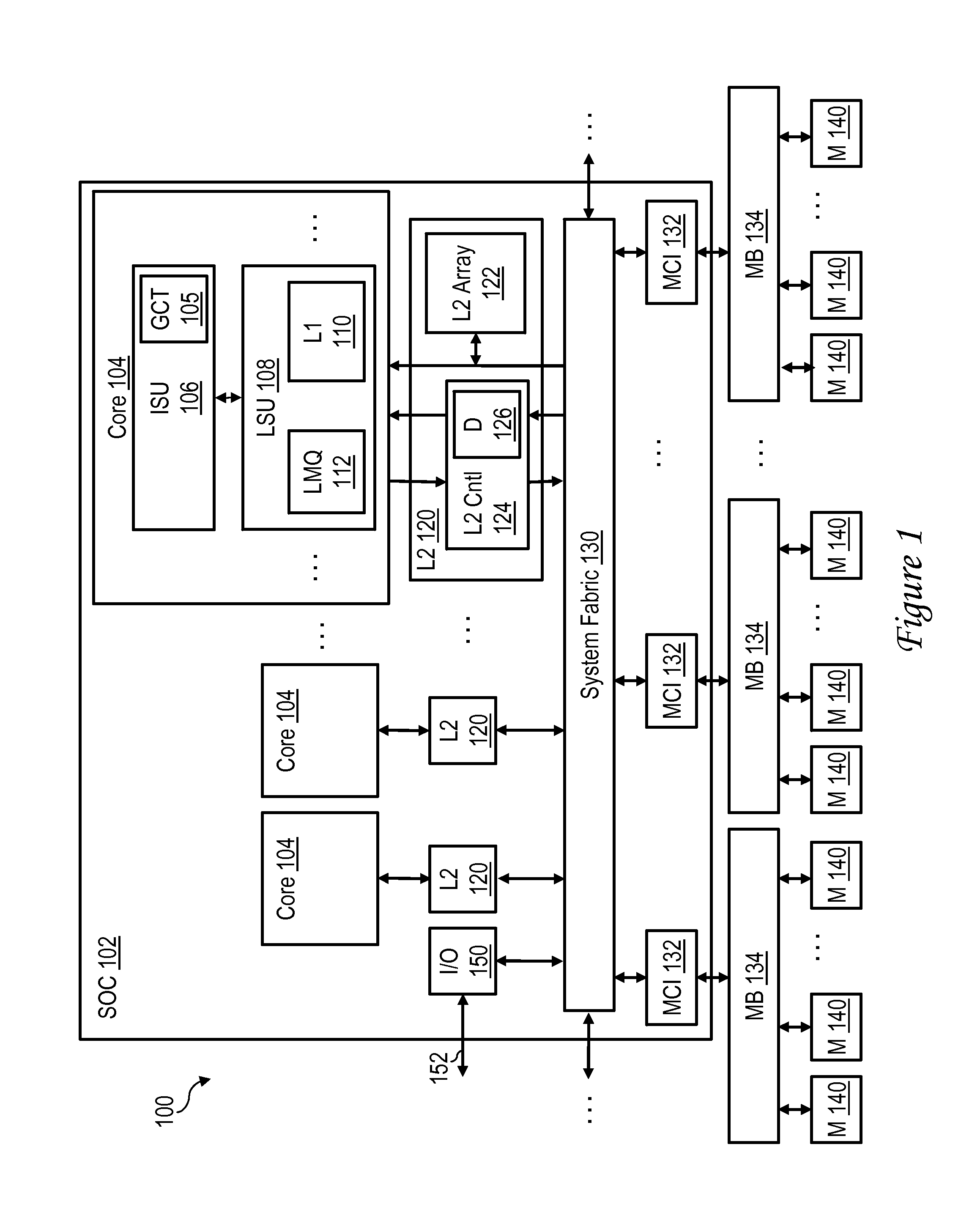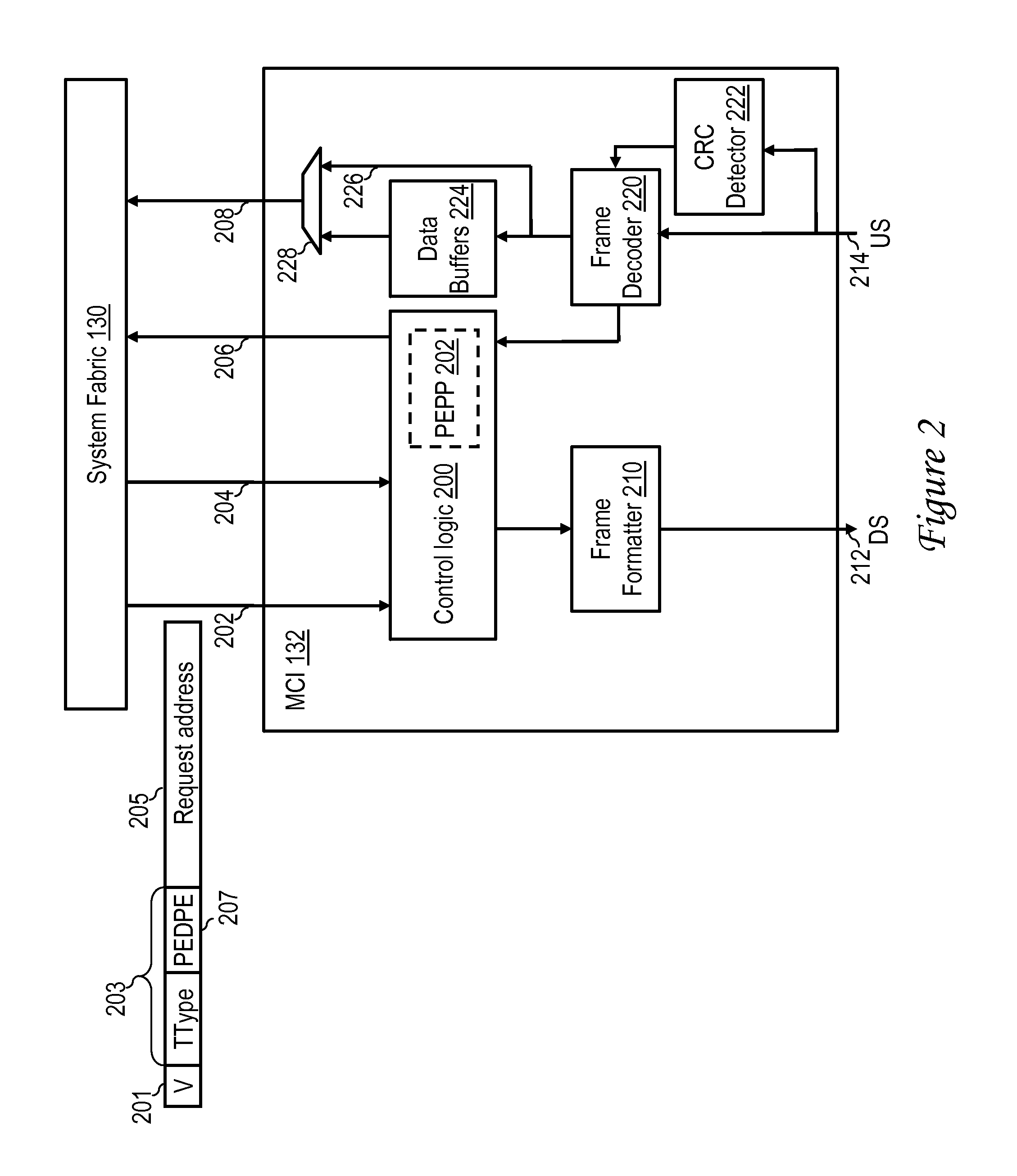Selective posted data error detection based on history
a technology of post data and error detection, applied in the field of data processing, can solve the problems of high inherent bit error rate on the interconnect, complex error codes such as ecc and crc, and increase access latency, so as to improve the effect of effective memory access latency
- Summary
- Abstract
- Description
- Claims
- Application Information
AI Technical Summary
Benefits of technology
Problems solved by technology
Method used
Image
Examples
Embodiment Construction
[0023]With reference now to the figures and with particular reference to FIG. 1, there is illustrated a high level block diagram of an exemplary data processing system 100 that is one of the numerous possible embodiments of a data processing system in accordance with the principles and techniques disclosed herein. Data processing system 100 may be implemented, for example, with one of the IBM Power servers, a product line of International Business Machines Corporation of Armonk, N.Y.
[0024]In the depicted embodiment, data processing system 100 includes at least one system-on-a-chip (SOC) 102, and as indicated by elliptical notation, possibly numerous SOCs 102 coupled by system fabric 130 integrated within the SOCs 102. Each SOC 102 is preferably realized as a single integrated circuit chip having a substrate in which semiconductor circuitry is fabricated as is known in the art. Each SOC 102 includes multiple processor cores 104 that independently process instructions and data. In som...
PUM
 Login to View More
Login to View More Abstract
Description
Claims
Application Information
 Login to View More
Login to View More - R&D
- Intellectual Property
- Life Sciences
- Materials
- Tech Scout
- Unparalleled Data Quality
- Higher Quality Content
- 60% Fewer Hallucinations
Browse by: Latest US Patents, China's latest patents, Technical Efficacy Thesaurus, Application Domain, Technology Topic, Popular Technical Reports.
© 2025 PatSnap. All rights reserved.Legal|Privacy policy|Modern Slavery Act Transparency Statement|Sitemap|About US| Contact US: help@patsnap.com



